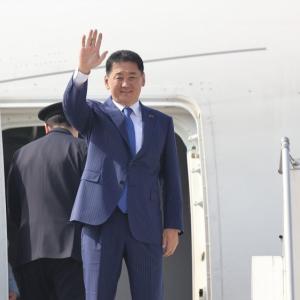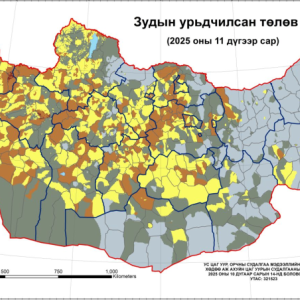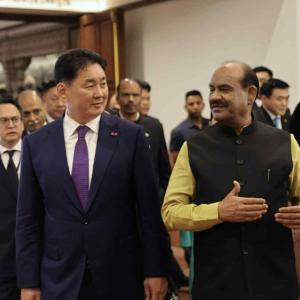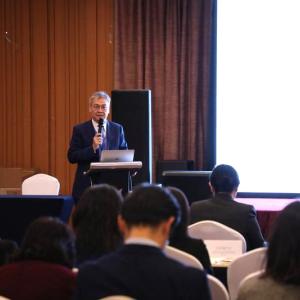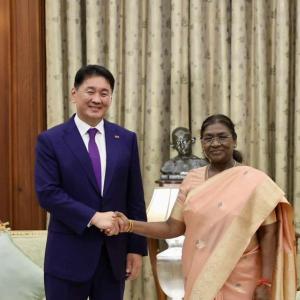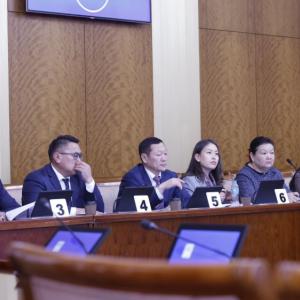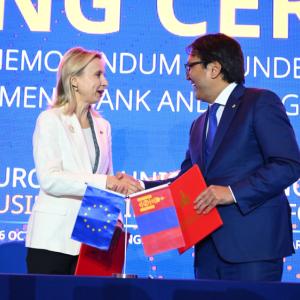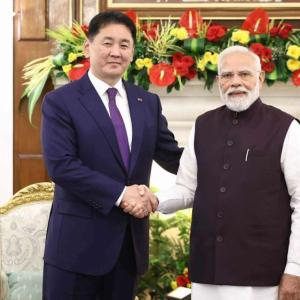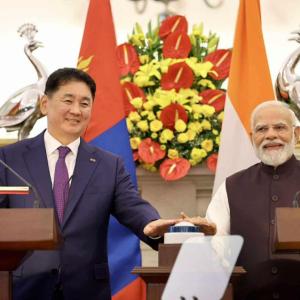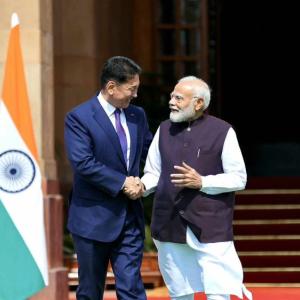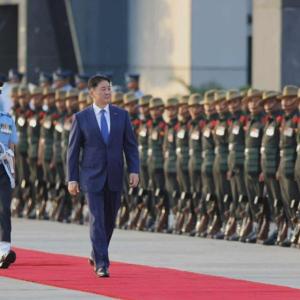IMF: Mongolia Needs to Adopt Greater Fiscal Prudence and Enhance Exchange Rate Flexibility to Counter Mounting Trade Tensions
Economy
Ulaanbaatar, May 21, 2025 /MONTSAME/. The Mongol Messenger Newspaper of the MONTSAME National News Agency of Mongolia presents an op-ed written by International Monetary Fund Resident Representative for Mongolia Tigran Poghosyan.
Asia’s Outlook Dims Amid
Trade Tensions
US tariffs have reached
their highest levels in a century, with many of the steepest aimed at Asia. The
region, which contributed nearly 60% of global growth in 2024, is now seeing
its trade-led development model tested. Long reliant on liberalized trade and
deep integration into global value chains, Asia faces mounting challenges as
US-China tensions escalate and global trade policy becomes increasingly uncertain.
While some tariffs have been paused, the overall climate of protectionism and
weaker global demand is weighing heavily on regional prospects.
Against this backdrop,
the economic outlook for Asia and the
Pacific has
dimmed significantly. Regional growth is forecast to slow to 3.9% in 2025, down
from 4.6% in 2024—the sharpest downgrade since the pandemic. Advanced Asian
economies are projected to grow by just 1.2%, while growth in emerging and
developing Asia is expected to reach 4.5%, both reflecting downward revisions.
China’s growth is set to remain around 4% despite fiscal stimulus, and ASEAN
economies are particularly exposed, with growth downgraded to 4.1% amid
external shocks and soft domestic demand. India, less reliant on trade, is
expected to slow moderately but remain a relative outperformer.
Tariffs and rising trade
barriers threaten to dent the region’s post-pandemic momentum, especially as
many Asian economies depend on exports amid subdued domestic demand. High debt
burdens and rising borrowing costs have also curbed consumer spending in several
countries. While demand for high-tech exports—especially those linked to AI—has
supported trade with the US and other advanced economies, this has also
increased Asia’s vulnerability to shifts in US demand and the risks of
intensifying protectionism.
Mongolia’s Economy Will
Feel the Impact
While Mongolia is not
directly involved in the ongoing tariff wars, it remains highly vulnerable to
the ripple effects of escalating global trade tensions—particularly those
between the United States and China. As China absorbs over 90 percent of
Mongolia’s exports, mostly in minerals like coal and copper, any slowdown in
Chinese demand due to tariffs or weakened industrial activity poses a direct
threat to Mongolia’s economic growth and budget. Lower commodity prices, driven
by heightened global uncertainty, could further erode national income, reduce
government revenue, and widen external imbalances.
The growing uncertainty
in global markets is likely to dampen investor confidence, especially in small,
resource-dependent economies such as Mongolia. Weaker foreign investment would
hinder progress on critical infrastructure, mining, and diversification
projects—many of which are central to the coalition government’s development
agenda. A decline in both export earnings and capital inflows would strain
Mongolia’s external accounts and weigh heavily on its financial resilience.
These pressures are
already felt through the exchange rate. Reduced foreign currency inflows have weakened
the tugrik, raising the cost of imports such as fuel, machinery, and consumer
goods. Mongolia could face rising inflation, eroding household purchasing power
and forcing the central bank to tighten monetary policy further. In turn,
higher interest rates could dampen domestic demand, compounding the economic
slowdown.
Balancing Act for Policies
to Counter the Vicious Cycle
The policy priority is to
restore both external and internal balances and avoid a rapid erosion of policy
buffers to prepare for future shocks.
Greater fiscal prudence and adherence
to fiscal rules are needed. To avoid buffers from eroding and external
imbalances from widening, the government should restrain demand for imports by containing current
spending and strengthening collections of non-mining tax revenues. The planned
cuts to non-mining taxation need to be reconsidered. The government needs to proceed
cautiously on mega projects given existing weaknesses in public investment
management and constraints in absorption capacity.
With rising inflation and credit
growth, the BOM needs to maintain tight domestic financial conditions. A
further increase in the policy rate is warranted to contain inflation and
manage inflation expectations, while reserve requirements should aim to manage
liquidity. The debt service-to-income limits of the non-bank financial sector
should be harmonized with those of the banking sector to contain excessive
growth in consumer credit and reduce regulatory arbitrage.
Amendments to the central bank law,
including recapitalization plans, are critical to boost the BOM's operational
independence, thus its effectiveness and credibility.
Finally, greater exchange rate
flexibility would strengthen resilience against external shocks.
 Ulaanbaatar
Ulaanbaatar





















